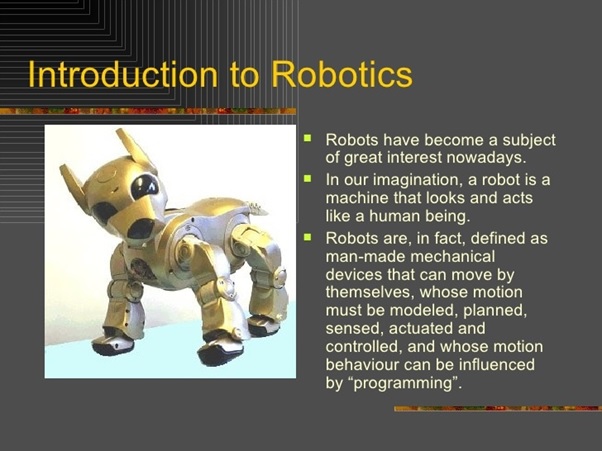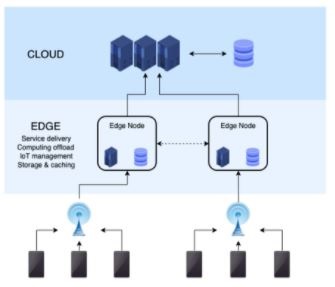Deep learning
Deep learning attempts to mimic the human brain—albeit far from matching its ability—enabling systems to cluster data and make predictions with incredible accuracy.
Deep learning is a subset of machine learning, which is essentially a neural network with three or more layers. These neural networks attempt to simulate the behavior of the human brain—albeit far from matching its ability—allowing it to “learn” from large amounts of data. While a neural network with a single layer [1] can still make approximate predictions, additional hidden layers can help to optimize and refine for accuracy.
- Deep learning drives many artificial intelligence (AI) applications and services that improve automation, performing analytical and physical tasks without human intervention. Deep learning technology lies behind everyday products and services (such as digital assistants, voice-enabled TV remotes, and credit card fraud detection) as well as emerging technologies (such as self-driving cars).
- Deep learning neural networks, or artificial neural networks, attempts to mimic the human brain through a combination of data inputs, weights, and bias. These elements work together to accurately recognize, classify, and describe objects within the data.
- Deep neural networks consist of multiple layers of interconnected nodes, each building upon the previous layer to refine and optimize the prediction or categorization. This progression of computations through the network is called forward propagation. The input and output layers of a deep neural network are called visible layers. The input layer is where the deep learning model ingests the data for processing, and the output layer is where the final prediction or classification is made.
- Another process called backpropagation uses algorithms, like gradient descent, to calculate errors in predictions and then adjusts the weights and biases of the function by moving backwards through the layers in an effort to train the model. Together, forward propagation [2] and backpropagation allow a neural network to make predictions and correct for any errors accordingly. Over time, the algorithm becomes gradually more accurate.
- The above describes the simplest type of deep neural network in the simplest terms. However, deep learning algorithms are incredibly complex, and there are different types of neural networks to address specific problems or datasets. For example,
- Convolutional neural networks (CNNs), used primarily in computer vision and image classification applications, can detect features and patterns within an image, enabling tasks, like object detection or recognition. In 2015, a CNN bested a human in an object recognition challenge for the first time.
- Recurrent neural network (RNNs) are typically used in natural language and speech recognition applications as it leverages sequential or times series data.
Deep Learning applicationsg
Real-world deep learning applications are a part of our daily lives, but in most cases, they are so well-integrated into products and services that users are unaware of the complex data processing that is taking place in the background. Some of these examples include the following figure1.
Law enforcement
Deep learning algorithms can analyze and learn from transactional data to identify dangerous patterns that indicate possible fraudulent or criminal activity. Speech recognition, computer vision, and other deep learning applications can improve the efficiency and effectiveness of investigative analysis by extracting patterns and evidence from sound and video recordings, images, and documents, which helps law enforcement analyze large amounts of data more quickly and accurately.
Financial services
Financial institutions regularly use predictive analytics to drive algorithmic trading of stocks, assess business risks for loan approvals, detect fraud, and help manage credit and investment portfolios for clients.
Customer service
Many organizations incorporate deep learning technology into their customer service processes. Chatbots—used in a variety of applications, services, and customer service portals—are a straightforward form of AI. Traditional chatbots use natural language and even visual recognition, commonly found in call center-like menus. However, more sophisticated chatbot solutions attempt to determine [3], through learning, if there are multiple responses to ambiguous questions. Based on the responses it receives, the chatbot then tries to answer these questions directly or route the conversation to a human user.
Virtual assistants like Apple's Siri, Amazon Alexa, or Google Assistant extends the idea of a chatbot by enabling speech recognition functionality. This creates a new method to engage users in a personalized way.
Healthcare
The healthcare industry has benefited greatly from deep learning capabilities ever since the digitization of hospital records and images. Image recognition applications can support medical imaging specialists and radiologists, helping them analyze and assess more images in less time.
Deep learning hardware requirements
- Deep learning requires a tremendous amount of computing power. High performance graphical processing units (GPUs) are ideal because they can handle a large volume of calculations in multiple cores with copious memory available. However, managing multiple GPUs on-premises can create a large demand on internal resources and be incredibly costly to scale.
- Example of Deep Learning. In the example given above, we provide the raw data of images
- Architectures. Deep Neural Networks. It is a neural network that incorporates the complexity
- Types of Deep Learning Networks 1. Feed Forward Neural Network. A feed-forward neural network
- Deep learning applications. Self-Driving Cars. In self-driven cars, it is able to capture the images

Figure1: Deep Learning.
Advantages of Deep Learning
- Solve Complex problems like Audio processing in Amazon echo, Image recognition, etc, reduce the need for feature extraction, automated tasks wherein predictions can be done in less time using Keras.
- Parallel computing can be done thus reducing overheads.
- Models can be trained on a huge amount of data and the model gets better with more data.
- High-Quality Predictions when compared with humans by training tirelessly.
- Works well-unstructured data like video clips, documents, sensor data, webcam data, etc.
Disadvantages of deep learning
- Large amount of calculation and poor portability
- High hardware requirements
- Complex model design
- Deep learning requires numerous machines and expensive GPUs to work. So, it becomes really expensive to build deep learning architecture.
- No "humanity", easy to prejudice
- Limitations of Deep Learning
- To deliver the best results [4], a deep learning algorithm requires massive amounts of data to get trained. If you are unable to feed them with enough data, the deep learning system is likely to fail.
- The term deep in deep learning doesn’t refer to the level of learning, but it refers to architecture. So, deep learning algorithms don’t really understand the context very well. With an increasing demand for real-time data analysis, it is required to quickly retrain deep learning models.
- There is no standardized theory to enable you to select the right deep learning tool as it requires you to have an understanding of the topology and other parameters.
- Deep learning is incredibly expert in providing cybersecurity. But the network of deep
- Deep learning requires numerous machines and expensive GPUs to work. So, it becomes really expensive to build deep learning architecture.
With the advancements in digitization, deep learning is evolving consistently, resulting in an explosion of data in different formats and that too from every corner of the world. Big data is collected from different sources such as social media, eCommerce platforms, search engines, and other sources. This massive amount of data is made accessible and is shared via fintech applications such as cloud computing.
Generally, this huge amount of data generated is unstructured and is impossible for humans to comprehend and extract useful information. Deep Learning utilizes a hierarchical level of artificial neural networks [5] to execute the processing of machine learning. These artificial neural networks are created as a human brain where neuron nodes are connected to each other like a web. Where traditional programs analyze the data in a linear manner, the hierarchical model of a deep learning system allows machines to work on the data in non-linear patterns.
Each layer of the neural network is built on its previous layer with the additional data. The final layer is responsible for giving out the desired result.
References:
- https://www.coursera.org/courses/ai
- https://www.udemy.com/learnanything/anytimeanywhere
- https://www.ibm.com/cloud/learn/deep-learning
- https://en.wikipedia.org/wiki/Deep_learning
- https://in.mathworks.com/discovery/deep-learning.html
Cite this article:
D. Vinotha (2021), Deep Learning, AnaTechmaz, pp. 4















